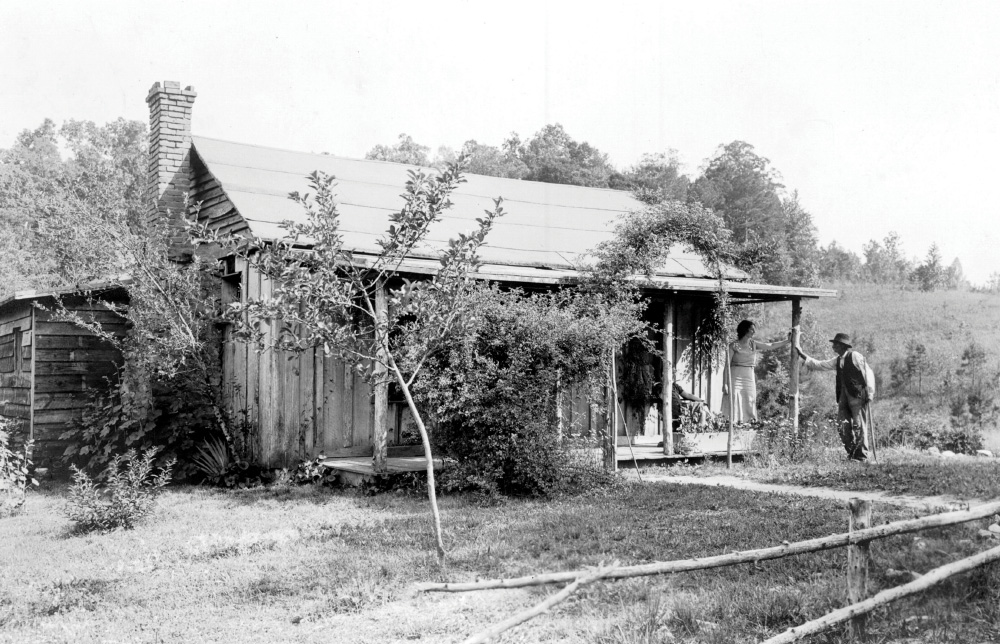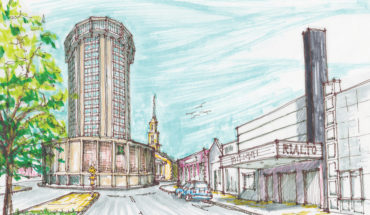Now a popular recreational area, William B. Umstead State Park once boasted homes, stores, and churches within a rural farming community
by Genie Safriet

Before William B. Umstead State Park was a recreational oasis, dozens of families called this land home. One hundred years ago, this rural farming community included a church, school, and general store at Adams Crossroads (where Raleigh-Durham International Airport now stands); another church and school within the Ebenezer section (near the modern-day Ebenezer Church Road and Highway 70); and, down by Crabtree Creek, the Company Mill, which ground corn and wheat. The land was a mix of forest and fields, and numerous creeks supported smaller mills.
European settlers came to the region in the late 1700s. The majority were of English descent — grants from the King of England motivated them to cultivate the territory. Farmer William Warren’s 1779 grant was one of the first, and his family still owned the land when it was sold to create Umstead Park in the 1930s.
By the early 1900s, more than 60 families were living on 50- to 70-acre homesteads that had been passed down through generations. Most were subsistence farmers; the soil had gradually eroded through poor practices. “They were just barely getting by,” says Joe Grissom, who grew up on a farm in the area. “They’d grow a little corn for the cornmeal and to feed the mule that plowed the garden.” Now in his 90s, Grissom recalls that in the Company Mill vicinity, “only one homestead had tobacco; the rest of them grew cotton. They had apple orchards, livestock, and everybody had their own pigs.” Families lived off the land, hunted squirrels and rabbits, and periodically drove over dirt roads to buy staples in Raleigh or Durham.
“They were good people,“ Grissom, whose family was one of the last to leave, says about his neighbors. “Once you knew one person, you got to know all the relatives.”
Family-owned Sorrell’s store at Adams Crossroads sold canned goods and Dickinson’s store sold sandwiches. In Stories in Stone, a 2011 book by Tom Weber about the farming community, resident Bill Haley shares that his family lived near Dickinson’s: “We used to get hold of a penny and go by the Dickinsons’ house, tell Mrs. Dickinson we wanted something. She’d go across the street, open the store, sell us a penny candy and lock up.”
Most homes were one-story and wood-framed, with three or four rooms and an attached kitchen. With no electricity or running water, the main room had a fireplace for heating. Each family had its own water source, and the hike from the well or spring to the house with full buckets of water was a daily chore.

When the chores were finished, the youngsters “made fun out of things,” Haley recalls in the book: “We made these carts with just a board down the middle and down each axle, put a rope on it. We’d pull it up the hill and ride down.” Children played marbles, bat-the-ball, and good-natured pranks.
From 1927 to the mid-1930s, Boy Scouts came to Camp Craggy, a summer camp initially funded by the Raleigh Rotary Club. Located on Company Mill land, the camp had six cabins, a mess hall, and a pond with a diving tower. Folks met for quilting parties, during which ladies sewed and made supper while the men shucked corn. On Saturday nights in the Company Mill’s large, second-story storage room, sacks of cornmeal were pushed to the wall to make way for lively dancing to fiddle and guitar music.
Come the Sabbath, folks attended Sunday school at Adams Crossroads Mount Hermon Church or Ebenezer Church. Long-time resident Rebecca King Simpson recalls in Stories in Stone how her neighbor, Bruce Sanders, drove through the community to pick up children for church; they stood in the back of his truck singing hymns. At summer revivals, neighbors would share fellowship alongside cornbread, preserves, and butterbeans.
In the Ebenezer section, community patriarch Al King and his family owned over 300 acres, including a two-story home, orchards, livestock, and a grist mill and cotton gin used by the community. He had a commanding presence, sharp mind — and license to make apple brandy. People were honored to get his advice.

Many of the adults were illiterate. In 1928, a determined teacher, Genevieve Woodson, revitalized a dilapidated building for Ebenezer School. There, from October to March, teenagers helped teach their younger siblings, and married couples studied with their children. (By contrast, the two-room Mount Hermon School at Adams Crossroads taught first- through sixth-graders for four months, to allow for tending crops; other children took the 7-mile bus ride to Cary public schools.) In the late 1920s, Woodson formed a Camp Fire Girls troop and talked neighbors into building the Log Cabin Theater (where Sycamore Creek now crosses Graylyn Trail). There, locals gathered for banquets, ballad singing, and plays performed by the neighborhood theater troupe, the Rustic Revelers.
The community’s survival depended on families working together and using all available resources. When Izzy Warren, great-grandson of William Warren, and his eldest son died within six weeks of each other in a typhoid epidemic, neighbors plowed Warren’s field to help his wife and their six remaining children. In Stories in Stone, Agatha King Johnson recalls hoeing weeds in the cotton field using worn socks as gloves.
As the soil eroded in the fields, exposed rocks had to be removed. These were used for house foundations and chimneys or simply piled up by the field. “A farmer would get up one morning and say, OK boys, it’s going to be raining today, so we can’t work in the fields, you know what that means,” says Grissom. They did: picking up rocks.
In 1934, as part of a federal program to purchase marginal lands for recreation, the government determined that the homesteads had such badly eroded soil that the farmers could not make a living. The National Park Service applied to the United States Department of Agriculture for approval to purchase and develop the land, which they were interested in for its natural beauty and location between towns. Community reaction ranged from enthusiasm to resentment, but eventually all the land was sold. Starting in 1936, Civilian Conservation Corps and Works Progress Administration workers demolished buildings, planted trees, built dams, and created four group camps.
By 1937, the camps were open for Boy and Girl Scouts and 4-H clubs in what was called Crabtree Creek Recreational Demonstration Area (it would eventually be renamed after the late North Carolina governor) and in 1943, North Carolina bought the land from the federal government for $1, with the agreement that it would remain a public recreational area. By 1966, the park, which had been segregated from 1950 to 1964, offered fishing in three lakes, picnicking at rustic shelters, and hiking along 33 miles of trails.

Next time you visit Umstead, keep an eye out for remnants of this community: non-native plants like magnolia trees or daffodils mark former homesteads, crumbling foundations from the old Camp Craggy are visible along Company Mill Trail, and the King family cemetery and remnants of their chimneys are near Graylyn Trail. Even all these decades later, traces of history remain.
_____
This article originally appeared in the April 2022 issue of WALTER Magazine



